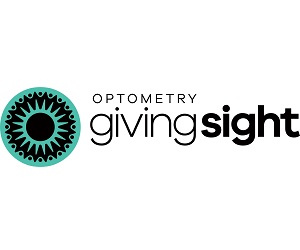
When using the internet to search for eyewear, most people are usually window shopping online, according to The Vision Council VisionWatch Internet Influence Report. In other words, they are conducting research and activities that are utilized to help them purchase eyewear in-person at a future date. People most often compare prices of eyewear. They also look to the internet to examine possible brands, and to examine possible retail locations where they might eventually make a purchase in-person.  People are somewhat less likely to use the internet to select the exact brand of eyewear they will buy, or to select the exact retail location where they will make a purchase. Finally, a small number of consumers are using the internet to review customer ratings/satisfaction relating to eyewear or eyewear retailers.
People are somewhat less likely to use the internet to select the exact brand of eyewear they will buy, or to select the exact retail location where they will make a purchase. Finally, a small number of consumers are using the internet to review customer ratings/satisfaction relating to eyewear or eyewear retailers.
The doctor-patient relationship has changed. The internet has driven that change. Information now is just fingertips away. Now patients come to doctors after going on the internet to do a little research. This can be both good and bad.
The good news is the more educated a patient is about the problems they are facing, the easier it is to get them to follow your treatment plan.
The bad side occurs because the internet is filled with both accurate information and inaccurate information, but there are no flags telling patients they are reading inaccurate information.
In our youth, one of the first of the medical television shows (Marcus Welby, M.D.) was popular. It was the story of two physicians treating patients. Each week had a new disease that was the center of the show. The problem was, the day after the show doctors’ offices across the country would be inundated with people calling to schedule appointments believing they had the disease that they had seen the night before on the show. That problem has not gone away. We’ve all seen patients who’ve spent time on the internet coming into the practice convinced they have a problem they’ve read about after using the Symptom Checker on WebMD.
Patients also research glasses and contact lenses online. The problem is they do not know that there are significant differences between glasses or contact lenses design, material, or manufacturing process. Patients have a fundamental misunderstanding that just because my new glasses or contact lenses have my doctor’s prescription in them, it doesn’t matter where I buy them. The reality is that it does matter. Design, material, and manufacturing process matters.
For both spectacle lenses and contact lenses, the design of the lenses matters. Just consider for a moment how many different designs of progressive addition lenses exist. Selecting the best design for the patient matters. Every contact lens company has a different design for astigmatism lenses. Design matters. If the patient does not have the best prescription design in the lenses for the patient, the patient may not have the best vision.
Material matters. Material directly impacts abberations, weight and thickness of the lenses. If the patient does not have the best material in the lenses made for the patient, the patient may not have the best vision. The same thing is true for contact lenses. Some lenses are better for patients with dry eyes, and some lenses are worse. Some material gives patients comfort all day, while with other materials, patient comfort degrades as the day progresses. Material does matter.
Manufacturing process matters. We now have the ability–by using advanced manufacturing processes–to have patients see clearly edge-to-edge with their spectacle lenses. With older manufacturing process, there was only one place on the spectacle lens with the patient’s exact prescription. Manufacturing process matters with contact lenses as well. Edges, thickness, lens smoothness all matter.
Our job is to recognize that patients do go on the internet for information. One way to address this fact is to help patients with accurate information. Here are two important ways you can positively impact patient care.
1) Make sure you are telling patient about more than just the change in their prescription. “Mrs. Jones, there has been a small change in your prescription and I’m going to prescribe this for you so that you can see clearer. But I’m also prescribing the material, the design of the prescription in your lenses, and the manufacturing process so that you will see the best. It’s more than just your prescription, you need to have all of these other things exactly as I’m prescribing them to see your best.”
2) Take this week to examine your web site. Do you have information on your web site you can easily “push” to patients? We used to give patients brochures and paper handouts. In today’s digital world, you and your staff should be directing patients to your web site for information. “Mr. Smith, you have primary open angle glaucoma. I’m sending you a link to information on my web site about primary open angle glaucoma that I want you to read. I’m also updating the information on your digital medical record. My staff is going to show you how to access that information through our secure portal.”
Embrace the fact that patients are going to use the internet. Find ways to use this information positively by guiding patients in their online experience.

MARK WRIGHT, OD, FCOVD
Dr. Wright is the founding partner of a nine-partner, three-location full-scope optometric practice. As CEO of Pathways to Success, an internet-based practice management firm, he works with practices of all sizes. He is faculty coordinator for Ohio State’s leading practice management program.

CAROLE BURNS, OD, FCOVD
Dr. Burns is the senior partner of a nine-doctor full-scope optometric practice that she built with her husband, Dr. Wright. She is also the COO of a state-wide nursing care optometry practice. Dr. Burns lectures nationally on practice management and staffing issues. Dr. Burns authored the Specialty Practice section of the textbook, Business Aspects of Optometry.























